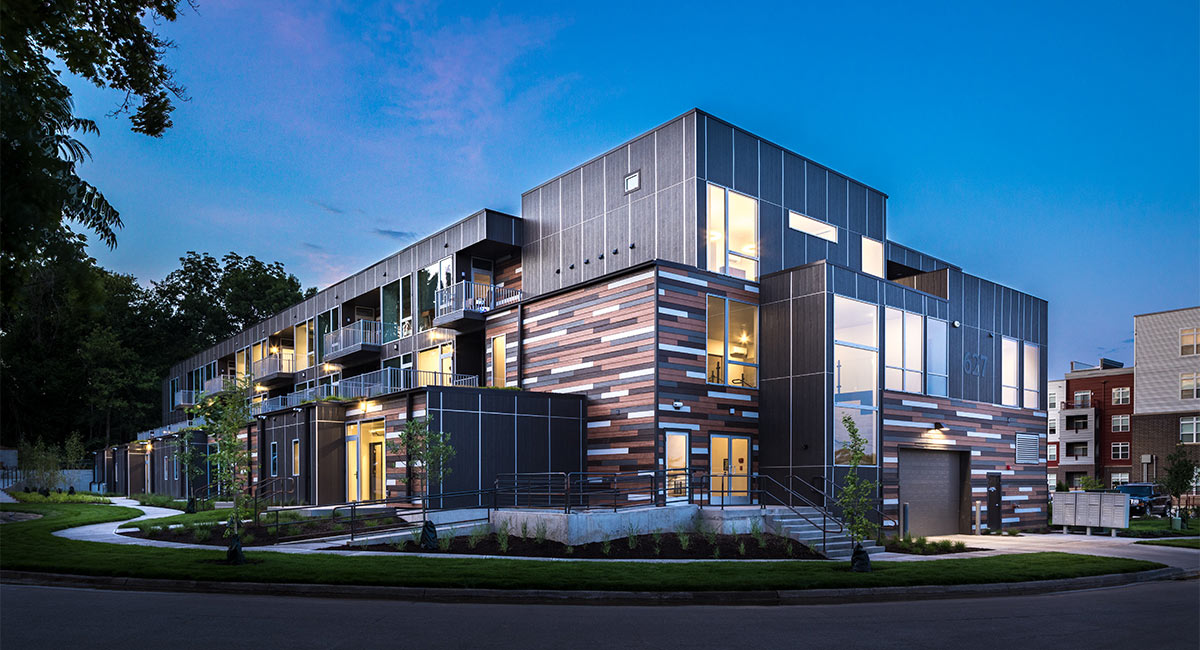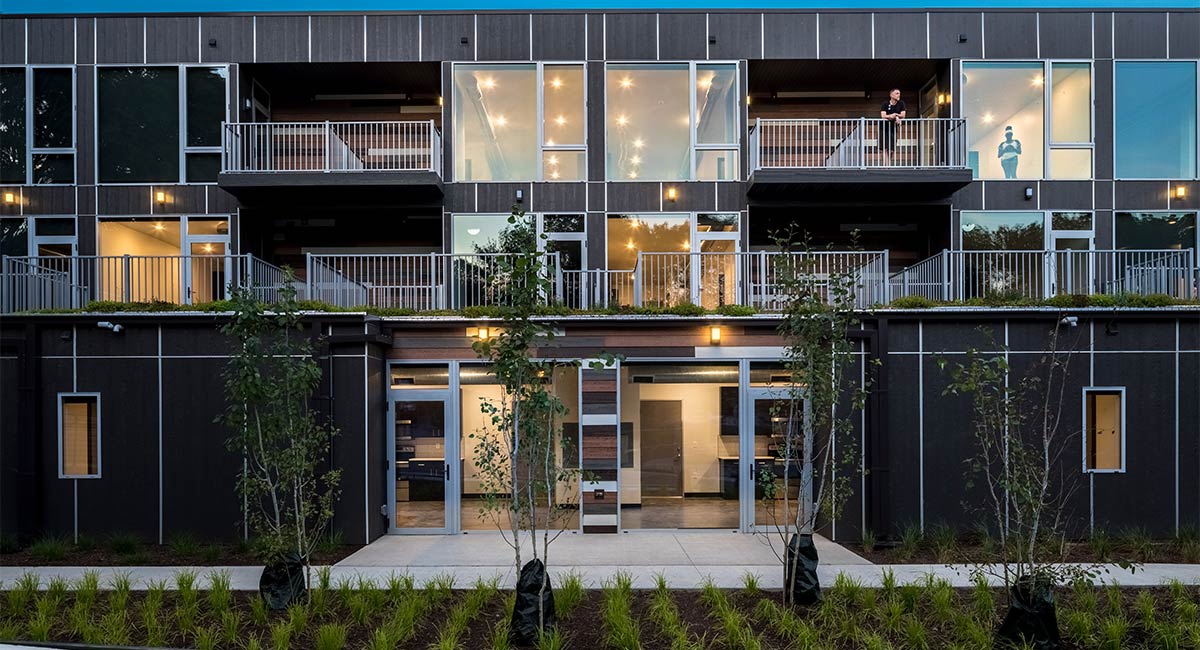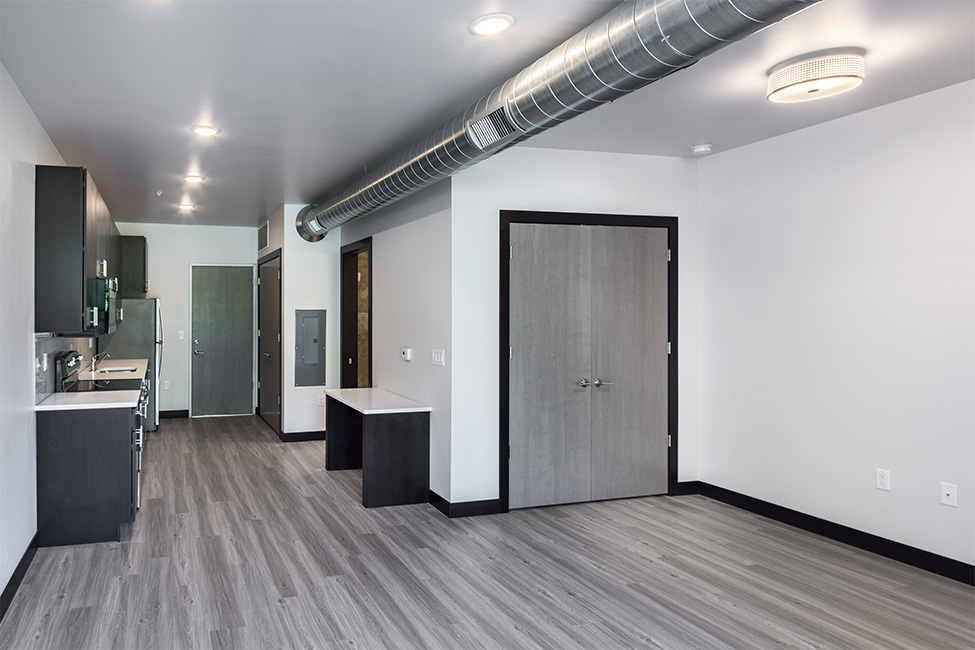What is shrinking and turning green? Multifamily Housing!
Many areas of the country are lacking in affordable housing options for young professionals and empty nesters.
Many areas of the country are lacking in affordable housing options for young professionals and empty nesters.

According to the United States Census Bureau, young adults are making $2,000 less per year than their parents were in the 1980s. This age group is also overwhelmed with ever more college debt, with around half of students borrowing for their education, up from around 30 percent in the mid-1990s.
Many areas of the country are lacking in affordable housing options for these young professionals and empty nesters, including the Corridor. It is important to provide quality, livable housing to keep them in our communities.
Go Small and Go Home!
The tiny house movement has gained a lot of attention recently. It seems to be the new darling of HGTV due to its focus on its affordability and extreme minimalist style. It has become so popular, even the Iowa Lottery has a “tiny house” themed scratch game showing the growing attraction to the idea of living in smaller spaces.
While living in a 150 square-foot home is not practical for many, multifamily developers are incorporating the smaller living principles into apartment-living. To make these units livable, developers and designers must be mindful of design, as there’s no room for wasted space, have a focus on community and location, as well has incorporate sustainable and green materials. Here are some of the ways these projects are being designed to compete in the marketplace.

No Wasted Space
The ways people live today do not follow traditional models. More people desire open and flexible space utilizing views, daylight, and direct access to the outdoors. Now is the time to look at typical living spaces with open plans where space could be more flexible and better utilized resulting in smaller and more affordable units. The key to making a small space feel big is fewer partitions and walls. Even with smaller spaces we still crave light and air, which suggests tall ceilings, big windows, skylights and glass walls that open would be popular design elements to attract people to units.
Focus on Community
As apartments are shrinking, common areas are expanding and being designed to meet the needs of tenants. To make unit sizes smaller and affordable, occasionally used spaces like larger dining, exercise and entertaining are being converted to shareable, common areas.
Having a large outdoor area to maintain is also not affordable or even viable for some millennials and especially, retirees. A small balcony or terrace would be an option for a tenant to have their own private, small, outdoor space. It is location and adjacency to paths, community gardens, trails and other natural amenities that help satisfy the outdoor requirements at a larger community scale and keeps new residential smaller and more connected.

Location Location Location
The Urban Land Institute revealed that 56% of Millennials preferred to live in walkable, mixed-use neighborhoods. A strong connection to the downtown areas of cities and their continued growth of amenities will be a strong attractor for new residents to the area or for our current residents looking to start a new chapter in their lives. Cedar Rapids, Iowa City, North Liberty and areas in between see increased activity in their Urban Cores and that vibrancy is very attractive to residents who want to live in a thriving economy and ultimately put down roots.
Turning Green
Having a smaller footprint is appealing due to its decreased environmental impact. Less space requires less energy (and money) to heat and cool. Coupled with this are efforts to provide more energy efficient heating and cooling systems, such as geothermal, as well as utilizing LED lighting and providing ample natural lighting within the units to decrease electricity use and cost. Many projects are also seeing the benefits of adding green roofs and renewable power sources such as solar power for portions of the building. Utilizing building materials that have less of an environmental impact and that are healthier long term are also important. Residents both old and new see value and take pride in living in a home with a focus on sustainability and it is becoming a differentiator in making their housing choices.
Location and cost are the primary attributes that potential renters ranked as most important aspects of choosing a place to live making smaller units attractive to all adults from millennials to empty nesters. Industry observers say the common thread that connects these groups is the desire for a low-maintenance, urban––or at least walkable––experience, enhanced by amenities that create a live-work-play community.
While the Multifamily market continues to grow – it will be the smaller, sustainable units that will be differentiating them in the marketplace – so get small and go green!